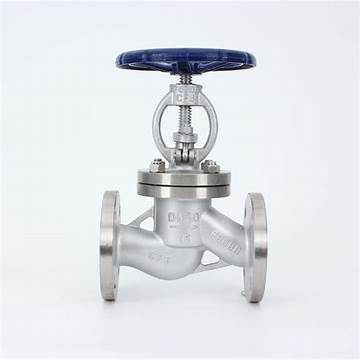SS Needle Valve Pricing and Market Trends Analysis for Industrial Applications
Understanding the Pricing of SS Needle Valves
When it comes to flow control in various industrial applications, needle valves are a critical component. Among the numerous types of needle valves, stainless steel (SS) needle valves have gained significant popularity due to their durability, corrosion resistance, and reliability. Understanding the pricing of SS needle valves is important for engineers, procurement professionals, and businesses looking to optimize their expenses without compromising on quality.
What are SS Needle Valves?
SS needle valves are designed to control the flow of liquids or gases in a pipeline. The distinctive feature of these valves is their elongated, tapered point (the needle) that allows for precise control over the flow rate. Often used in applications where fine adjustments are necessary, needle valves can be found in a variety of industries, including oil and gas, pharmaceuticals, food and beverage, and water treatment.
The use of stainless steel enhances the properties of these valves, making them suitable for high-pressure systems and environments exposed to corrosive substances. Their robust construction minimizes the risk of leaks and ensures a longer lifespan, contributing to their cost-effectiveness over time.
Factors Influencing SS Needle Valve Prices
Several factors influence the prices of SS needle valves, and understanding these can help buyers make informed decisions
1. Material Grade The type of stainless steel used significantly impacts the price. Common grades include 304 and 316, with 316 being more corrosion-resistant and therefore typically more expensive. For applications in harsh environments, investing in higher-grade materials can lead to reduced maintenance and replacement costs.
2. Valve Size The size of the valve is another key determinant of price. Larger valves require more material and manufacturing efforts, resulting in higher costs. Buyers must consider the balance between required flow capacity and budget constraints.
3. Manufacturer and Brand Different manufacturers offer varying price points based on their reputation, production processes, and quality assurance practices. Established brands with a track record of quality might charge a premium, while lesser-known manufacturers may offer more competitive prices. However, buyers should weigh brand reliability against cost.
ss needle valve price

4. Design Complexity Needle valves come in various designs, each suited to specific applications. More complex designs, such as those with additional features like locking mechanisms or specific instrumentation connections, may drive up prices.
5. Production Volume Supply chain dynamics also affect pricing. Buying in larger quantities often leads to bulk discounts, whereas single-unit purchases may reflect higher per-unit costs. For businesses that anticipate their need for needle valves, planning and purchasing in bulk can result in significant savings.
6. Market Demand The overall market demand for SS needle valves can lead to price fluctuations. Factors such as increased industrial activity, economic trends, or even changes in environmental regulations can affect how much businesses are willing to pay.
7. Delivery Times and Shipping Costs Lead times for production and shipping logistics can influence overall costs. Faster delivery options may come at a premium, while longer wait times might allow for lower costs but can impact project timelines.
Where to Purchase SS Needle Valves
Purchasing SS needle valves can be done through various channels, including online marketplaces, specialized industrial suppliers, and direct from manufacturers. Online purchasing provides the advantage of comparing prices and features easily, while local suppliers may offer personalized service and support.
Before making a purchase, it’s advisable to gather quotations from multiple sources to ensure competitive pricing. Additionally, consulting product catalogs and understanding the technical specifications can aid in selecting the right valve for your specific needs.
Conclusion
The price of SS needle valves reflects a combination of material quality, size, manufacturing complexity, and market dynamics. When evaluating options, consider not only the upfront costs but also the long-term value associated with durability and performance. By understanding these factors, businesses can make informed decisions that serve both their operational requirements and budget constraints, ensuring efficient flow control in their processes. As industries evolve and technology advances, staying updated on materials and market trends can lead to even greater efficiencies and cost savings in the procurement of SS needle valves.
-
Breakthrough in Domestic Low Temperature Valve Technology in ChinaNewsAug.18,2025
-
From Machinery to Intelligent Brain: The Digital Transformation Wave of the Valve IndustryNewsAug.18,2025
-
PCVEXPO 2025NewsAug.18,2025
-
The Key to Fluid Control: Exploring the Advantages of Ball Valves in Industrial SystemsNewsJul.09,2025
-
The Versatile World of 1, 2, and 3 Piece Ball ValvesNewsJul.09,2025
-
Stainless Steel Ball Valves: The Ideal Choice for Efficient Flow ControlNewsJul.09,2025
-
Optimizing Fluid Control with Ball Float ValvesNewsJul.09,2025




